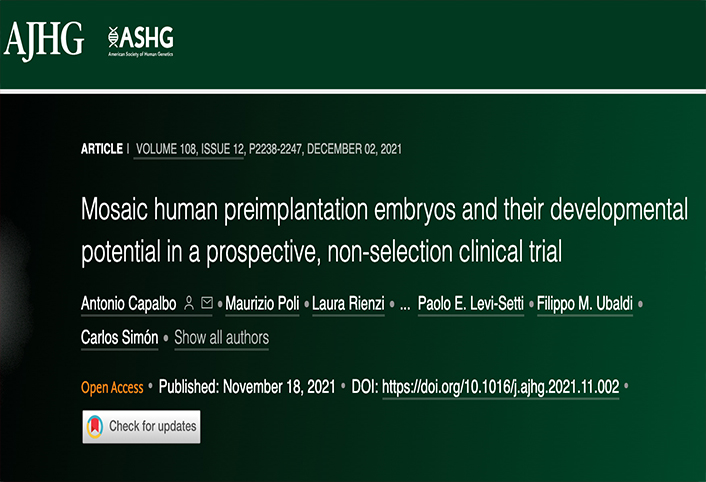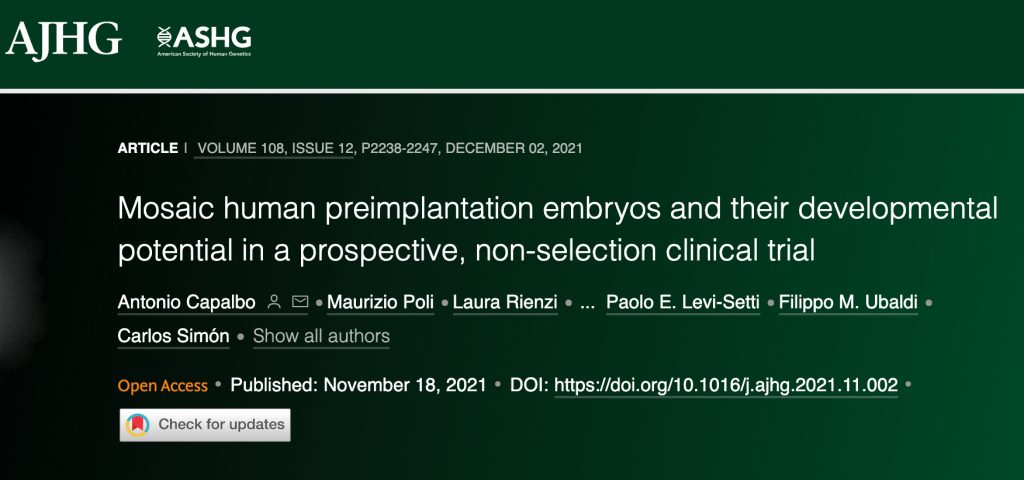
Mosaic human preimplantation embryos and their developmental potential in a prospective, non-selection clinical trial
Antonio Capalbo, Maurizio Poli, Laura Rienzi, Laura Girardi, Cristina Patassini, Marco Fabiani, Danilo Cimadomo, Francesca Benini, Alessio Farcomeni, Juliana Cuzzi, Carmen Rubio,
Elena Albani, Laura Sacchi, Alberto Vaiarelli, Matteo Figliuzzi, Necati Findikli, Onder Coban, Fazilet K. Boynukalin, Ivan Vogel, Eva Hoffmann, Claudia Livi, Paolo E. Levi-Setti, Filippo M. Ubaldi, and Carlos Simo
AJHG November 18, 2021 DOI:https://doi.org/10.1016/j.ajhg.2021.11.002
Abstract
Chromosome imbalance (aneuploidy) is the major cause of pregnancy loss and congenital disorders in humans. Analyses of small biopsies from human embryos suggest that aneuploidy commonly originates during early divisions, resulting in mosaicism. However, the developmental potential of mosaic embryos remains unclear. We followed the distribution of aneuploid chromosomes across 73 unselected preimplantation embryos and 365 biopsies, sampled from four multifocal trophectoderm (TE) samples and the inner cell mass (ICM). When mosaicism impacted fewer than 50% of cells in one TE biopsy (low-medium mosaicism), only 1% of aneuploidies affected other portions of the embryo. A double-blinded prospective non-selection trial (NCT03673592) showed equivalent live-birth rates and miscarriage rates across 484 euploid, 282 low-grade mosaic, and 131 medium-grade mosaic embryos. No instances of mosaicism or uniparental disomy were detected in the ensuing pregnancies or newborns, and obstetrical and neonatal outcomes were similar between the study groups. Thus, low-medium mosaicism in the trophectoderm mostly arises after TE and ICM differentiation, and such embryos have equivalent developmental potential as fully euploid ones.
